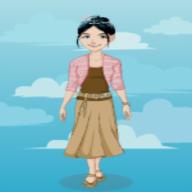把以下內容翻譯為繁體中文
文法必需通順
6. The aircraft may be anything that meets the following limitations:
a. The aircraft must not use commercially produced remote control systems that are designed for movement
and/or steering. That is, any commercial remote control must be something that was not designed to help a
vehicle travel or to help steer a vehicle or aircraft in order to be allowed to help propel or direct the aircraft.
b. Each must be created by the team or propelled using a team-created system or both. Team-created aircraft
may use commercially produced parts.
c. Each must be different in design from the others. Parts of one aircraft may be used as part of another aircraft.
d. They do not have to carry their propulsion systems.
e. The aircraft must not touch anything when it has traveled beyond the Start Line when attempting a Flight Plan
unless contacting something is required for that Flight Plan.
Page 1 of 5
7. The propulsion systems used to propel the aircraft:
a. must be created by the team or must propel team-created aircraft or both. The combination may be different
for each aircraft. Team created propulsion systems may use commercially produced parts.
b. must apply energy in a way that is deemed safe by the judges.
c. must be at least three different designs for the six aircraft.
d. may use any type of energy provided it fits within the propulsion categories and the Program Guide limitations.
Teams must use direct human power for one or two aircraft; indirect human power for one or two aircraft;
and two to four aircraft must be mechanically powered.
8. The team will select any three different aircraft and their propulsion systems to be scored in D5-7. These may
include more than one from the same propulsion category.
翻譯英譯中~~急15點
2009-12-27 10:43 pm
回答 (2)
2009-12-27 11:27 pm
✔ 最佳答案
6。這架飛機可能是任何符合下列限制: 字母a.該飛機不得使用商業性生產的遠程控制系統,是專為運動
和/或指導。也就是說,任何商業遠程控制必須的東西,這不是為了幫助
汽車旅行,或幫助引導車輛或飛機,以允許有助於推動或直接的飛機。
灣每一個必須創建該小組或團隊推動使用創建的系統或兩者兼而有之。團隊創造飛機
可以使用商業性生產的零部件。
角必須在每一個不同的設計,從其他人。部分一架飛機可能被用作另一架飛機的一部分。
d.他們沒有攜帶他們的推進系統。
大腸桿菌這架飛機必須按兵不動時,它已超越了旅行線時開始嘗試飛行計劃
除非聯繫事情是需要的飛行計劃。
第1頁 5
7。推進系統用於推動飛機:
字母a.必須創建的小組或團隊必須推動建立的飛機或兩者兼而有之。這種組合可能會有所不同
每架飛機。團隊創建推進系統可使用商業生產的零部件。
灣必須應用能源的方式,被視為安全的法官。
角必須至少有三個不同的設計為 6架飛機。
d.可以使用任何類型的能源只要符合該類別和推進計劃指南的限制。
團隊必須使用直接的人力,為一次或兩次飛機,間接的人力,一至兩飛機;
和3時 58飛機必須由機械推動的。
8。該小組將選擇三種不同的任何飛機及其推進系統可以取得D5 - 7。這可能
包括多個來自同一推進類別。
2009-12-28 1:50 am
6。這架飛機可能是任何符合下列限制:
字母a.該飛機不得使用商業性生產的遠程控制系統,是專為運動
和/或指導。也就是說,任何商業遠程控制必須的東西,這不是為了幫助
汽車旅行,或幫助引導車輛或飛機,以允許有助於推動或直接的飛機。
灣每一個必須創建該小組或團隊推動使用創建的系統或兩者兼而有之。團隊創造飛機
可以使用商業性生產的零部件。
角必須在每一個不同的設計,從其他人。部分一架飛機可能被用作另一架飛機的一部分。
d.他們沒有攜帶他們的推進系統。
大腸桿菌這架飛機必須按兵不動時,它已超越了旅行線時開始嘗試飛行計劃
除非聯繫事情是需要的飛行計劃。
第1頁 5
7。推進系統用於推動飛機:
字母a.必須創建的小組或團隊必須推動建立的飛機或兩者兼而有之。這種組合可能會有所不同
每架飛機。團隊創建推進系統可使用商業生產的零部件。
灣必須應用能源的方式,被視為安全的法官。
角必須至少有三個不同的設計為 6架飛機。
d.可以使用任何類型的能源只要符合該類別和推進計劃指南的限制。
團隊必須使用直接的人力,為一次或兩次飛機,間接的人力,一至兩飛機;
和3時 58飛機必須由機械推動的。
8。該小組將選擇三種不同的任何飛機及其推進系統可以取得D5 - 7。這可能
包括多個來自同一推進類別。
字母a.該飛機不得使用商業性生產的遠程控制系統,是專為運動
和/或指導。也就是說,任何商業遠程控制必須的東西,這不是為了幫助
汽車旅行,或幫助引導車輛或飛機,以允許有助於推動或直接的飛機。
灣每一個必須創建該小組或團隊推動使用創建的系統或兩者兼而有之。團隊創造飛機
可以使用商業性生產的零部件。
角必須在每一個不同的設計,從其他人。部分一架飛機可能被用作另一架飛機的一部分。
d.他們沒有攜帶他們的推進系統。
大腸桿菌這架飛機必須按兵不動時,它已超越了旅行線時開始嘗試飛行計劃
除非聯繫事情是需要的飛行計劃。
第1頁 5
7。推進系統用於推動飛機:
字母a.必須創建的小組或團隊必須推動建立的飛機或兩者兼而有之。這種組合可能會有所不同
每架飛機。團隊創建推進系統可使用商業生產的零部件。
灣必須應用能源的方式,被視為安全的法官。
角必須至少有三個不同的設計為 6架飛機。
d.可以使用任何類型的能源只要符合該類別和推進計劃指南的限制。
團隊必須使用直接的人力,為一次或兩次飛機,間接的人力,一至兩飛機;
和3時 58飛機必須由機械推動的。
8。該小組將選擇三種不同的任何飛機及其推進系統可以取得D5 - 7。這可能
包括多個來自同一推進類別。
收錄日期: 2021-04-18 14:06:01
原文連結 [永久失效]:
https://hk.answers.yahoo.com/question/index?qid=20091227000051KK00753


